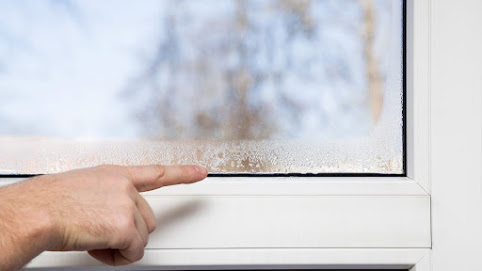Get ideas for your home. Find out what you need to know about your home, from the health and safety of children to how to keep it clean and healthy. Here you'll find extensive information about home improvement. You'll find step-by-step instructions and helpful advice in this blog.
Saturday, June 22, 2024
What Routine Maintenance is Required for a Furnace?
Thursday, June 13, 2024
Eco-Friendly Ways to Reduce Humidity in Your House
1. Improve Ventilation
2. Use Houseplants
3. Fix Leaks
4. Natural Desiccants
5. Air Dry Your Clothes Outside
6. Energy-Efficient Dehumidifiers
7. Insulate Your Home
Tuesday, June 4, 2024
Space Heater Safety Guide
Space heaters are a common household item that can provide much-needed warmth during the cold winter months. However, it is important to use them safely to prevent potential hazards. Here is a safety guide to follow when using a space heater:
 |
| Image Credit: https://commons.wikimedia.org/wiki/File:SpaceHeater.JPG |
1. Choose the Right Space Heater:
There are many different types of space heaters available, including electric, propane, and kerosene heaters. Electric heaters are usually the safest option, as they do not emit carbon monoxide. Make sure to choose a space heater that is appropriate for the size of the room you are heating.
2. Keep Flammable Items Away:
Keep all flammable items, such as curtains, blankets, and furniture, at least three feet away from the space heater. This will help prevent accidental fires.
3. Do Not Leave Unattended:
Never leave a space heater running unattended. Turn it off when you leave the room or go to bed, and unplug it when not in use.
4. Plug Directly Into Wall Outlet:
Do not use an extension cord or power strip with a space heater. Plug it directly into a wall outlet to avoid overheating and potential fire hazards.
5. Regularly Inspect and Maintain:
Check your space heater regularly for signs of damage or malfunction. Clean the heater and replace any worn-out parts as needed.
6. Install Carbon Monoxide Detector:
If you are using a gas-powered space heater, make sure to install a carbon monoxide detector in your home. Carbon monoxide Carbon monoxide is a colorless, odorless gas that can be deadly if inhaled in large amounts.
7. Keep Children and Pets Away:
To prevent burns or accidents, keep children and pets away from the space heater. Consider using a heater with a protective guard to keep little hands or paws from touching the hot surface.
By following these safety tips, you can enjoy the warmth of a space heater without worrying about potential hazards. Stay warm and stay safe this winter!
Chill Out with Confidence: The Benefits of Certified AC Installation
When summer’s heat hits its peak, having a reliable air conditioning system becomes essential. However, the quality of your AC installation ...

-
When your outside AC unit fails to power up, it can quickly turn a comfortable home into an uncomfortable one, especially during the hot sum...
-
Space heaters are a common household item that can provide much-needed warmth during the cold winter months. However, it is important to use...
-
When summer’s heat hits its peak, having a reliable air conditioning system becomes essential. However, the quality of your AC installation ...




